
Finland, officially the Republic of Finland, is a Nordic country in Northern Europe. It borders Sweden to the northwest, Norway to the north, and Russia to the east, with the Gulf of Bothnia to the west and the Gulf of Finland to the south, opposite Estonia. Finland covers an area of 338,145 square kilometres (130,559 sq mi) and has a population of 5.6 million. Helsinki is the capital and largest city. The vast majority of the population are ethnic Finns. Finnish and Swedish are the official languages, with Swedish being the native language of 5.1% of the population. Finland's climate varies from humid continental in the south to boreal in the north. The land cover is predominantly boreal forest biome, with more than 180,000 recorded lakes.
The transport system of Finland is well-developed. Factors affecting traffic include the sparse population and long distance between towns and cities, and the cold climate with waterways freezing and land covered in snow for winter.

Helsinki is the capital and most populous city in Finland. It is located on the shore of the Gulf of Finland and serves as the seat of the Uusimaa region in southern Finland. Approximately 0.67 million people live in the municipality, with 1.25 million in the capital region, and 1.58 million in the metropolitan area. As the most populous urban area in Finland, it is the country's most significant centre for politics, education, finance, culture, and research. Helsinki is situated 80 kilometres (50 mi) to the north of Tallinn, Estonia, 360 kilometres (220 mi) to the north of Riga, Latvia, 400 kilometres (250 mi) to the east of Stockholm, Sweden, and 300 kilometres (190 mi) to the west of Saint Petersburg, Russia. Helsinki has significant historical connections with these four cities.

Vantaa is a city in Finland. It is located to the north of the capital, Helsinki, in southern Uusimaa. The population of Vantaa is approximately 247,000. It is the 4th most populous municipality in Finland. Vantaa is part of the Helsinki Metropolitan Area, which has approximately 1.58 million inhabitants.

Helsinki-Vantaa Airport, or simply Helsinki Airport, is the main international airport of the city of Helsinki, its surrounding metropolitan area, and the Uusimaa region in Finland. The airport is located in the neighbouring city of Vantaa, about 5 kilometres (3 mi) west of Tikkurila, the administrative centre of Vantaa and 9.2 NM north of Helsinki's city centre. The airport is operated by state-owned Finavia. The facility covers a total of 1,800 hectares of land and contains three runways.
Between 1634 and 2009, Finland was administered as several provinces. Finland had always been a unitary state: the provincial authorities were part of the central government's executive branch and apart from Åland, the provinces had little autonomy. There were never any elected provincial parliaments in continental Finland. The system was initially created in 1634. Its makeup was changed drastically on 1 September 1997, when the number of the provinces was reduced from twelve to six. This effectively made them purely administrative units, as linguistic and cultural boundaries no longer followed the borders of the provinces. The provinces were eventually abolished at the end of 2009. Consequently, different ministries may subdivide their areal organization differently. Besides the former provinces, the municipalities of Finland form the fundamental subdivisions of the country. In current use are the regions of Finland, a smaller subdivision where some pre-1997 läänis are split into multiple regions. Åland retains its special autonomous status and its own regional parliament.

The University of Helsinki is a public university in Helsinki, Finland. The university was founded in Turku in 1640 as the Royal Academy of Åbo under the Swedish Empire, and moved to Helsinki in 1828 under the sponsorship of Tsar Alexander I. The University of Helsinki is the oldest and largest university in Finland with the widest range of disciplines available. In 2020, around 31,600 students were enrolled in the degree programs of the university spread across 11 faculties and 11 research institutes.
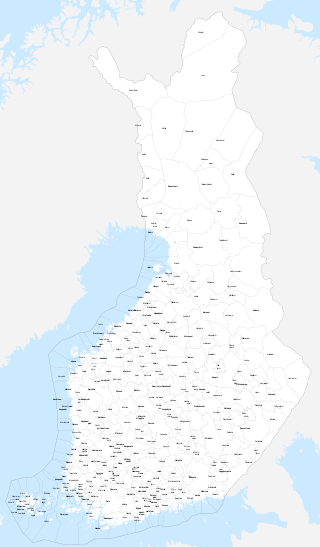
The municipalities represent the local level of administration in Finland and act as the fundamental, self-governing administrative units of the country. The entire country is incorporated into municipalities and legally, all municipalities are equal, although certain municipalities are called cities or towns. Municipalities have the right to levy a flat percentual income tax, which is between 16 and 22 percent, and they provide two thirds of public services. Municipalities control many community services, such as schools, health care and the water supply, and local streets. They do not maintain highways, set laws or keep police forces, which are responsibilities of the central government.

The Helsinki Metro is a rapid transit system serving the Helsinki capital region, Finland. It is the world's northernmost metro system. It was opened to the general public on 2 August 1982 after 27 years of planning. It is operated by Helsinki City Transport and Metropolitan Area Transport Ltd for Helsinki Regional Transport Authority and carries 92.6 million passengers per year.
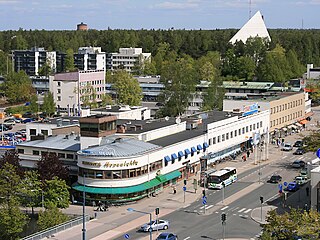
Hyvinkää is a town in Finland, located in the southern interior of the country. Hyvinkää is situated in the northern part of the Uusimaa region. The population of Hyvinkää is approximately 47,000. It is the 23rd most populous municipality in Finland. Hyvinkää is part of the Helsinki Metropolitan Area, which has approximately 1.58 million inhabitants.
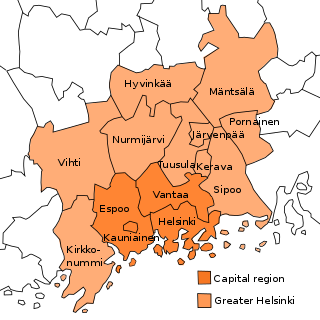
Helsinki metropolitan area or Greater Helsinki is the metropolitan area around Helsinki, the capital city of Finland. It also includes the smaller capital region. The terms Helsinki metropolitan area, Greater Helsinki, Capital region and the other terms used are not fixed and may vary in different contexts.

Helsinki commuter rail is a commuter rail system serving the Helsinki metropolitan area. The system is managed by the Helsinki Regional Transport Authority (HSL) and operations are contracted out to VR at least until 2031.
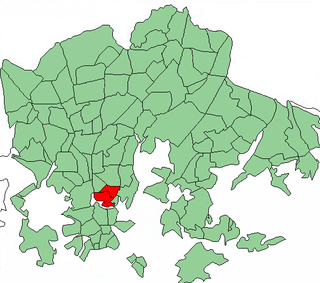
Kallio is a district and a neighbourhood in Helsinki, the capital of Finland, located on the eastern side of the Helsinki peninsula about one kilometre north from the city centre. It is one of the most densely populated areas in Finland. Kallio is separated from the city centre by the Siltasaarensalmi strait, over which is a bridge called Pitkäsilta. Traditionally, the bridge symbolizes the divide between the affluent centre and the more working class areas around Kallio.

Trams in Helsinki form part of the public transport system organised by Helsinki Regional Transport Authority and operated by Metropolitan Area Transport Ltd in Finland's capital city of Helsinki. The trams are the main means of transport in the city center, and 56.8 million trips were made on the system in 2019. In addition to the older tram network, there is a single light rail line that was opened in October 2023. Although technically compatible with the tram network, the light rail line is separate from the city center tram network.

Public transport in Helsinki consists of bus, tram, metro, local railway and ferry services. The system is managed by the Helsinki Regional Transport Authority and covers Helsinki, Espoo, Kauniainen, Vantaa and the outlying Kerava, Kirkkonummi, Sipoo and Tuusula.

Jätkäsaari is a peninsula and a quarter in Helsinki, the capital city of Finland. It is part to the Kampinmalmi district and Länsisatama neighbourhood. It was the site of the main container harbour in Helsinki until late 2008, when the harbour moved to the new facilities in Vuosaari. The terminals for passenger ferries to Tallinn and Saint Petersburg remain in Jätkäsaari at the West Harbour.

A library system is a central organization created to manage and coordinate operations and services in or between different centers, buildings or libraries branches and library patrons. They use a library classification to organize their volumes and nowadays also use an Integrated library system - an enterprise resource planning system for a library used to track items owned, orders made, bills paid, and patrons who have borrowed. Many counties, states and universities have developed their own library systems. For example, the London Public Library in Canada has 16 branches, and the Helsinki Metropolitan Area Libraries, in Finland, has 63 libraries. Some countries, such as Venezuela, have only one library system for the whole country; the National Library of Venezuela has 685 branches.
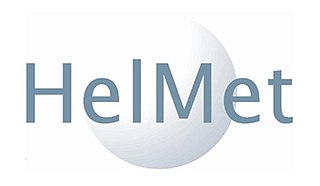
Helsinki Metropolitan Area Libraries (Helmet) is a library network in Finland. It consists of the city libraries of Helsinki, Espoo, Kauniainen, and Vantaa.

The Helsinki Central Library Oodi, commonly referred to as Oodi, is a public library in Helsinki, Finland. The library is situated in the Kluuvi district, close to Helsinki Central Station and next to Helsinki Music Centre and Kiasma Museum of Contemporary Art. Despite its name, the library is not the main library in the Helsinki City Library system, which is located in Pasila instead; "central" refers to its location in the city centre.

Helsinki City Library is the largest public library in Finland. Owned by the City of Helsinki, the library has 37 branches and a collection of about 1.56 million books. The City Library is part of the Helsinki Metropolitan Area Libraries network.


















